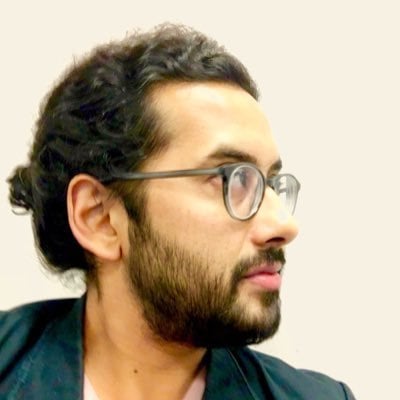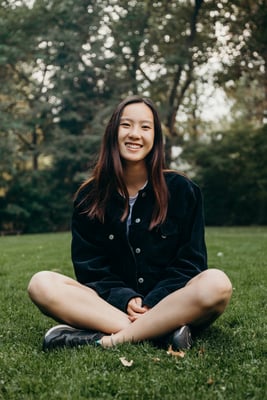Dear writers,
How are you doing? It feels like a year has passed since last month’s installment of this Q&A series. Amid the COVID-19 pandemic, there is much uncertainty—however, there is also heartening kindness and humanity: all over the world, we have witnessed neighbors helping neighbors, strangers calling on senior citizens, emails and phone calls from friends spread across the globe. As the world practices social isolation, we are learning to connect in new and powerful ways. I see this connection manifesting at Write the World, where you are writing, peer reviewing, and connecting across continents, sharing care and concern through the written word.
Like many of you, I find solace in reading and writing. Whether a brand new bestseller or classic tale, there is escape in a riveting storyline. But what about those texts for which we have to work hard to find enjoyment? What about those words that feel so distant, so remote, that our minds wander as our eyes scan the sentences?
This month, Ottavia from Canada asks:
“How do you decipher (and eventually enjoy) the works of writers who’ve lived long before us? Teenagers tend to despise novels and poems from the Romantic era onwards, as the language feels archaic and difficult to comprehend. Many of us might end up reading and analyzing Keats, Twain, Wordsworth, Whitman, Coleridge, Blake, Longfellow, etc. in university. How do you make sense of their words, and do you think it’s possible for teens to find meaning and beauty in it?”

Aatif’s Answer:
“I think the first step to finding meaning and beauty in work from the past is to get rid of the idea that the best metric for appreciating literature is relatability. While it may be true that some of the first books we loved were ones we felt a personal connection to, the truth is that we’re not always going to personally relate to what we read. Instead, we need to approach these books from a more objective point of view and think about what they might have meant to audiences of their time. This often means working our way through somewhat difficult language or sentence structure; but once we do, we end up locating human emotions within these books— providing us a window into how people felt in a different time.
Essentially, I’m making an argument against universality: often, we’re taught that the best books are universal. But I don’t really believe that. Books are written by authors who’ve lived through very specific and often unique historical experiences, and they don’t always resonate the same way from era to era. Our responsibility as readers therefore—and especially those of us who want to be writers too—is to remember the historical relativity of human experience. Once we do that, we can find meaning and beauty in what a book might have meant to an audience of its time.”
BIO: Aatif Rashid is the author of the novel Portrait of Sebastian Khan (2019), a literary comedy about the complicated romantic life of a Muslim-American art history student. He’s published short stories in various literary magazines, and he writes regularly about fiction writing for The Kenyon Review blog.
Sarah’s Answer:

“Something I’ve struggled with, with older poets, is the sensation of needing to decipher a specific meaning. I think contemporary poetry is a lot more intuitive, and flexible in interpretation. I did a project on Robert Browning’s ‘Porphyria’s Lover,’ and I think it certainly requires a type of frameshift in how we look at text. You have to be a lot more careful with what each word means, and it feels like a cross between a STEM diagram that you have to unpack/unravel and a Shakespearean sonnet––which is so interesting in its own way.”
BIO: Sarah Feng is a student, writer, and Studio Ghibli enthusiast from Northern California. She is the editor-in-chief of COUNTERCLOCK Journal and the founding director of the COUNTERCLOCK Arts Collective. Her writing has been recognized widely. A Teen Vogue Underwriting Scholarship Winner and 2019 Global Literacy Champion, Sarah is also a cross-country and track runner, and loves hiking, road-tripping, and playing Christmas music on the piano very badly (but with spirit!). A rising freshman at Yale University, Sarah plans to study English and art history in the fall.
Sarah and Aatif’s words inspire me to reflect on my own experiences writing and reading, studying English Language & Literature in college. While working on the close, careful analysis that Sarah describes, I often found it helpful to acknowledge the ways in which my identity and context differed from those of a given author or character, as Aatif reminds us. Yet, I also found it striking—even moving—to recognize the core emotions and motives underlying texts from the past, and the ways in which I, too, have experienced similar thoughts and feelings, albeit under different circumstances, just by being human. Shakespeare’s Hamlet articulated the throes of grief; Salinger captured the angst of growth; Wordsworth’s “Tintern Abbey” inspired me to look with fresh eyes upon the natural landscapes that surrounded me. So many words sought to convey beauty and challenge, desire and hope.
I can’t say that these classic authors or texts are my “favorites,” or that I turn to them when I’m looking to read for pleasure. But I can say that it was validating, as a teenager and college student, to view even a fraction of my inner life fractalized in literature. To imagine the lives that preceded mine, and to predict what might follow.
Tell us, writers, what classic texts do you enjoy? Which have you had to work hard to understand? What has helped you approach these texts through a lens of objectivity, as Aatif suggests?





